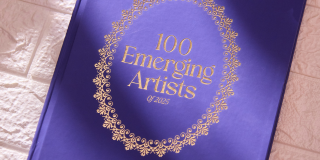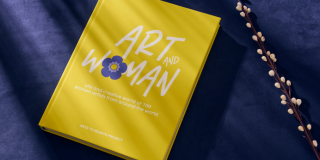
Why Every Gallery Needs Art Books in Their Collection
---
# **Why Every Gallery Needs Art Books in Their Collection**
Walk into any great gallery, and you’ll feel it immediately: the weight of history, the spark of discovery, the dialogue between past and present. Galleries are not just walls hung with canvases — they are keepers of stories. Yet, there’s a quiet truth often overlooked: exhibitions are temporary, but books last.
That’s why art books have always been the backbone of cultural preservation. For galleries, they are not just nice-to-have additions to the library, they are essential. They extend the life of exhibitions, document the voices of artists, and offer audiences something tangible to take home. At Arts to Hearts Project, our editions are designed with this exact vision: to give permanence to creativity and to create books that sit comfortably in both a gallery archive and a collector’s hands.
So why should every gallery invest in art books? Let’s look closer.
---
## **Spotlighting Emerging Talent**
Every gallery is, at its heart, a place of discovery. Curators search for voices that are new, relevant, and capable of shaping the conversations of tomorrow. But spotting talent isn’t just about who you show on your walls today — it’s about documenting them early, giving them a presence in the narrative of art history.
Books like *Artists to Watch Edition 1* and *Artists to Watch Edition 2* do exactly that. They don’t just showcase artworks; they position emerging artists in a wider cultural context, allowing galleries to see who is stepping forward with fresh ideas and unique practices.
Similarly, *100 Emerging Artworks: 2024 Women’s Edition* and *100 Emerging Artists of 2025* are more than anthologies. They are archives of voices, a record of the artists galleries should be paying attention to — not just as participants in a single exhibition, but as contributors to a broader artistic movement. For a gallery, these volumes are invaluable tools, both for scouting talent and for aligning with the names that will matter years down the line.
---
## **Preserving the Creative Process**
When visitors walk through an exhibition, they see the final result — the finished canvas, the polished sculpture. What they rarely see is the messy, human process behind it. Yet for many, that’s the part that resonates most. Galleries know this: collectors, students, and audiences are often hungry for stories about *how* art comes into being.
That’s why books like the *Studio Visit series (Vol. 1–6)* or *The Creative Process* are so powerful. They open the doors to artists’ private worlds, showing the paint-stained tables, the pinned-up sketches, the light falling across half-finished work. They let readers into spaces that are usually closed — and in doing so, they make exhibitions feel deeper, more human.
Even thematic volumes like *Time and Memory* preserve not only artworks but also the reflections and processes that shaped them. For galleries, these books aren’t just catalogues, they are bridges — connecting audiences to artists in a way that exhibitions alone cannot.
---
## **Curated Themes that Inspire Exhibitions**
Every curator is, in some sense, also a reader. Before an exhibition comes a question: *What’s the story we want to tell?* Books often become the starting point for that answer. A well-curated art book is essentially an exhibition on paper — a thematic dialogue across mediums, artists, and geographies.
Titles like *The Lines and Curves Book* or the *101 Art Book* series (*Abstract, Nature, Portrait*) function exactly this way. They show how artists from around the world respond to a single idea, whether it’s the simplicity of form, the essence of the natural world, or the complexity of the human face. For galleries, such volumes are sparks — they inspire exhibitions, reveal trends, and expand conversations.
Having them on a shelf isn’t just about collecting; it’s about being equipped to imagine and create what comes next.
---
## **Building Cultural Memory**
At the end of the day, galleries aren’t just in the business of showing art. They’re in the business of preserving it. Exhibitions open and close, but the responsibility of cultural memory remains. This is where books become indispensable.
Volumes like *The Power of She*, *Art and Woman Edition 2*, and *Women Artists on the Rise (Editions 1 & 2)* are not just publications — they are acts of preservation. They ensure that women’s creativity, resilience, and imagination are documented and remembered. For galleries committed to inclusivity and cultural responsibility, these books carry weight far beyond their covers.
They become part of the gallery’s archive, proof that the institution did not just follow art trends but helped shape the story of who gets remembered.
---
## **Conclusion: Beyond the Exhibition Wall**
When the lights dim, when the walls are cleared, when an exhibition comes to an end — what remains? For galleries, the answer should be books. They are the bridge between the fleeting and the permanent, between what was shown and what will be remembered.
At Arts to Hearts Project, our books are created with this responsibility in mind: limited editions, never reprinted, crafted to endure in collections, archives, and libraries. They are not just companions to exhibitions — they are extensions of them.
For every gallery seeking to strengthen its cultural voice, art books are no longer optional. They are essential.
**Explore our catalogue today and discover the volumes that will enrich your gallery’s story and preserve its legacy.**
---


